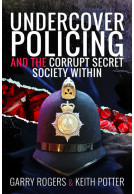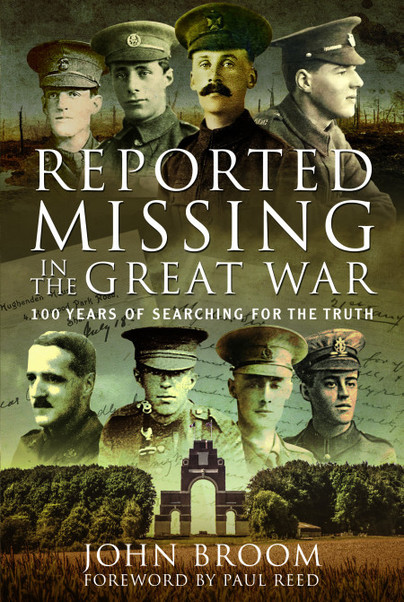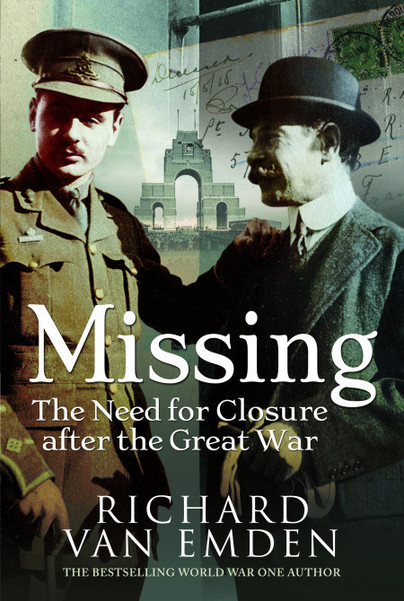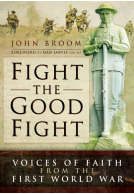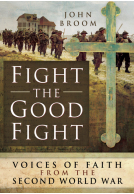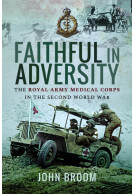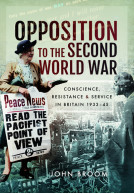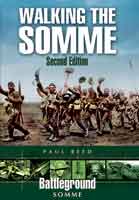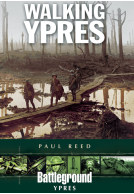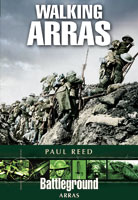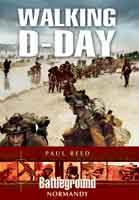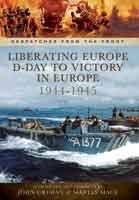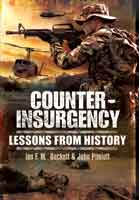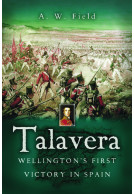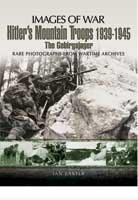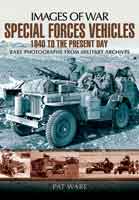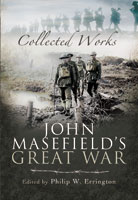Reported Missing in the Great War (Hardback)
100 Years of Searching for the Truth
Imprint: Pen & Sword Military
Pages: 304
Illustrations: 58 integrated black and white illustrations
ISBN: 9781526749512
Published: 4th November 2020
Last Released: 13th April 2021
(click here for international delivery rates)
Order within the next 11 hours, 6 minutes to get your order processed the next working day!
Need a currency converter? Check XE.com for live rates
| Other formats available - Buy the Hardback and get the eBook for £1.99! | Price |
|---|---|
| Reported Missing in the Great… ePub (30.4 MB) Add to Basket | £6.99 |
Of the one million British and Empire military personnel who were killed in action, died of wounds, disease or injury or were missing presumed dead during the First World War, over half a million have no known grave. Of these, nearly 188,000 are buried anonymously in Commonwealth War Graves Commission cemeteries, with a stone bearing the epitaph ‘Known Unto God’. The remains of a further 339,000 lie scattered across the wartime battlefields, having been buried in marked graves that were subsequently obliterated as front lines moved backwards and forwards, or destroyed forever in the carnage mechanised warfare wrought upon the human body.
For the families of those who were reported missing, months of agonising uncertainty could await, as searches were made to establish the precise fate of their loved ones. Sometimes rumours that an individual was recovering from wounds in a hospital, unable to contact his family, or had been taken prisoner by the enemy could circulate, causing a toxic admixture of hope, tinged with anxiety then dashed by the despair of the confirmation of death.
This book traces the history of the searching services that were established to assist families in eliciting definitive news of their missing loved ones. Then, using previously unpublished material, most of it lovingly preserved in family archives for over a century, the lives of eight soldiers, whose families had no known resting place to visit after the conclusion of the war, are recounted. These young men, their lives full of promise, vanished from the face of the earth. The circumstances of their deaths and the painstaking efforts undertaken, both by family members and public and voluntary organisations, to piece together what information could be found are described. The eventual acceptance of the reality of death and the need to properly commemorate the lives of those who would have no marked grave are examined. For three of the eight men, recent discoveries have meant that over a century since they were given up as missing, their remains have been identified and allowed families some degree of closure.
A thought provoking read for anyone who visits one of the CWGC sites.
Military Model Scene
Read the full review here
There is so much of interest in this book that I find it very hard to put down!
Fascinating Facts Of The Great War
Even if you are not among those who have family members who were reported missing during the First World War, this is an extremely interesting book and another must read for anyone interested in the history of the First World War.
Read the full review here
As featured on Female War Poets
Female War Poets
Of one million British and Commonwealth dead, some half a million lie with no known grave. The author recounts the efforts over more than a century to locate and identify those unknown soldiers – Very Highly Recommended
Firetrench
Read the full review here
"I found the book extremely interesting, and recommend it to anyone with an interest in the Great War as a whole."
Cross and Cockade
Over 750,000 servicemen from Great Britain and Ireland lost their lives during the First World War, many of whom were, one way or another, simply swallowed up by the battlefield and denied a final resting place beneath a named headstone. The Commonwealth War Graves Commission Memorials to the Missing carry the names of over 300,000 whose bodies were not recovered or whose remains could not be identified. The largest at Thiepval carries over 72,000 names, the Menin Gate in Ypres over 50,000 and the Tyne Cot Memorial a further 34,000. For the families of “the missing” the lack of closure following the death of their loved ones simply added to their grief and frequently their quest for answers, or “the truth” as the author describes it, became a life long obsession. Following in the footsteps of Richard Van Emden’s acclaimed “ Missing – The Need for Closure after the Great War” (Pen & Sword 2019), John Broom has researched the lives of eight soldiers who fell in the War and were classed as “Missing” and with the help of their families describes their life long quest for answers to soften their grief. In recent years, with the benefit of modern technology and DNA testing, it has been possible in some cases to identify human remains when they are discovered by chance lying where they fell in former battlefields. When linked to a forensic examination of contemporary records, which was simply impossible in the past, and the latest genealogical techniques it is remarkable that over one hundred years after their death it is sometimes possible to give the “missing” the formal burial and named headstone they have been denied for so long and to give their loved ones the closure they yearn for. The author skilfully weaves the harrowing experiences of these eight grieving families with the official processes and procedures in place over the years to identify and commemorate the missing. It is remarkable that three of his eight chosen casualties now have a final resting place with an appropriate CWGC headstone to honour their sacrifice. This is an enlightening read which will be of particular interest to those whose loved ones were declared “missing” during the War or who are researching the human side of World War One.
Military Historical Society
Review by Mark Simner
WDYTYA? Magazine, April 2021
Meticulously researched and skillfully written, this book will suit anyone with an interest in the war, but especially those with a military relation who died and has no known grave.
The author has done much detailed research and he must be commended for his time and effort. Many of the stories are family related and there are numerous examples in the book. It just shows how many families he must have contacted and researched. There is some comfort that this book indicates the efforts families went to so that they had some details of their loved ones’ last days and it shows the love that the families had for their Servicemen. It is a poignant book and brings home the true cost of war as a great credit to the men and their families.
Dr Stuart C Blank
This book is a snapshot of the misery and pain that was suffered by those who not only lost loved ones in the Great War, but were denied a graveside to mourn at or even detailed knowledge of the circumstances that had taken their loved one from them.
Paul Nixon
The memorials to the missing in France and Belgium bear awful and awesome testimony to the scale of loss during the First World War and this book brings the focus down to eight specific families and, I suppose their search for closure; a useful reminder, if any reminder were still needed, of the sucking brutality of the First World War which plucked men from their peaceful Edwardian lives and obliterated them.
5 stars
Read the full review here
It’s a fascinating book about research and new technologies that are now able to help. A great book if you like a mystery, and you like to sift through piles of papers and information to put the puzzle together. I would wholeheartedly credit the author John Broom, who has put all this together and has produced a great book that is well written, informative and clear to read. The book also comes amply supplied with a number of photographs and pictures of the soldiers involved. A book that really is good and appeals to those who love collecting information about this fascinating subject.
UK Historian
5 stars
Read the full review here
Listed in the ‘IN THE KNOW’ feature
Dorset magazine, February 2021
This book looks at some of the men who lost their lives but of whom there were no remains, and at the impact this must have had on the families who awaited news of their loved ones. The amazing thing is that the organisations who continue to search for these lost lives are still turning up information. Brilliant.
Books Monthly
I enjoyed reading these compelling stories of eight missing soldiers from the First World War. Their backgrounds, families and the sad circumstances of their deaths with no known grave are each sympathetically told so that it feels like you knew them. As the majority of the world was affected by this global conflict, this book also highlights the worries and hardships that most of our families must have experienced at the time. As such, this tells us some of what our own grandparents, great grandparents etc. must have gone through too.
Walker, Amazon Customer
Also included is the heartening and fascinating account that three of the families finally received some closure after over 100 years of waiting, when the remains of their missing soldier relative were at last discovered and they could visit their grave for the first time!
This book is a snapshot of the misery and pain that was suffered by those who not only lost loved ones in the Great War, but were denied a graveside to mourn at or even detailed knowledge of the circumstances that had taken their loved one from them.
Old Soldier Sahib, Amazon Customer
The memorials to the missing in France and Belgium bear awful and awesome testimony to the scale of loss during the First World War and this book brings the focus down to eight specific families and, I suppose their search for closure; a useful reminder, if any reminder were still needed, of the sucking brutality of the First World War which plucked men from their peaceful Edwardian lives and obliterated them.
Interview with John Broom conducted by Justin Macartney
Belfast 89 FM
As a battlefield guide I have always thought that the term ‘missing’ was one of the cruellest (though unintentional) tricks played on the families of those soldiers who could not be found and identified. That telegram or letter that a loved one was missing opened the mind to the potential that the missing soldier was not dead and allowed hope to spring eternal. The author has compiled a narrative and examples that describe the context that therefore inevitably developed. The shame was that many soldiers who had seen how the soldier had died were unwilling or unable to say with the necessary clarity exactly how they died; often the details were too gruesome to bear repetition to those unfamiliar with death in the trenches. This book offers a good introduction to the subject.
Michael McCarthy
Michael McCarthy. Battlefield Guide
About John Broom
After graduating in History from the University of Sheffield in the early 1990s, JOHN BROOM pursued a career in teaching, firstly in his chosen subject and latterly with children with autism. He has been awarded a PhD on Christianity in the British Armed Services by the University of Durham. John has a wide-ranging knowledge and interest in social, sporting, industrial and military history, and is the author of eight published books: Cricket in the First World War: Play Up! Play the Game (Pen & Sword, 2022), Cricket in the Second World War: The Grim Test (Pen & Sword, 2021), Reported Missing in the Great War: 100 years of searching for the truth (Pen & Sword, 2020); Faithful in Adversity: The Royal Army Medical Corps in the Second World War (Pen & Sword, 2019); Opposition to the Second World War: Conscience, Resistance and Service in Britain, 1933–45 (Pen & Sword, 2018); A History of Cigarette and Trade Cards (Pen & Sword, 2018); Fight the Good Fight: Voices of Faith from the Second World War (Pen & Sword, 2016); Fight the Good Fight: Voices of Faith from the First World War (Pen & Sword, 2015).
About Paul Reed
Paul Reed is a leading military historian, specializing in the two world wars. He has been visiting European battlefields for more than thirty years, and lived on the Somme for over a decade. He has worked as a researcher and battlefield guide, and is the author of several books on the Great War. He also regularly contributes to television programmes, such as Timewatch, Meet the Ancestors and Who Do You Think You Are? and was historical consultant to BBC1’s My Family At War.
Missing: The Need for Closure after the Great War (Hardback)
In May 1918, Angela and Leopold Mond received a knock on the front door. It was the postman and he was delivering the letter every family in the United Kingdom dreaded: the notification of a loved one’s battlefield death, in their case the death in action of their eldest child, their son, Lieutenant Francis Mond. The twenty-two year old Royal Flying Corps pilot, along with his Observer, Lieutenant Edgar Martyn, had been shot down over no man’s land, both being killed instantly. If there was one crumb of comfort, it was the news that a brave Australian officer, Lieutenant A.H. Hill, had gone…
By Richard van EmdenClick here to buy both titles for £31.50
